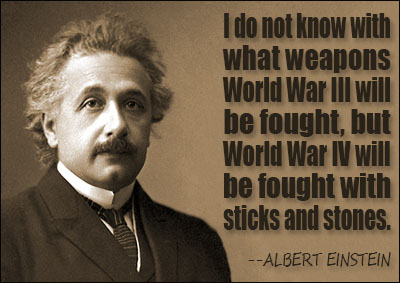"BEIJING: China today announced testing of a new generation of inter-continental ballistic missile, Dongfeng-41, with a strike range of 14,000 km and capable of carrying multiple nuclear warheads.
"China last month tested a new generation of intercontinental ballistic missile, the Dongfeng-41, or DF-41, which is believed to have a maximum strike distance of 14,000 km," the state-run CCTV said in a brief report."
Intercontinental Ballistic Missiles
After World War II, the U.S. defensive policy of strategic deterrence depended on a large fleet of long-range bombers that could deliver accurate nuclear strategic attacks. This method of defence was too slow to deploy in case of extreme emergency, a better, faster, and less costly solution was needed.
Three developments in the mid-1950s, however, led to the intercontinental ballistic missile (ICBM): (1) development of the thermonuclear bomb with a much greater destructive power than the original atomic bomb; (2) the rapid refinement of inertial guidance systems for ballistic missiles; and (3) the development of powerful booster engines for multistage rockets, greatly increasing their size and range. As a result, ballistic missiles became sufficiently accurate and powerful to destroy targets 8000 km (5000 mi) away. For more than thirty years, the ICBM has been the the symbol of the United States' strategic nuclear arsenal.
 US / USSR Intercontinental Ballistic Missiles
US / USSR Intercontinental Ballistic Missiles
 Atlas D Missile Intercontinental Ballistic Missile stands 75ft high and 10 ft in diameter. Atlas, the U.S.'s first successful ICBM, was tested in 1959 and was followed one year later by theTitan. Both were multistage liquid-fueled rockets using extremely low temperature propellants that had to be added just before launching.
Atlas D Missile Intercontinental Ballistic Missile stands 75ft high and 10 ft in diameter. Atlas, the U.S.'s first successful ICBM, was tested in 1959 and was followed one year later by theTitan. Both were multistage liquid-fueled rockets using extremely low temperature propellants that had to be added just before launching.

Titan II in silo Intercontinental Ballistic Missile 103 ft high, 10 ft in diameter
 Minuteman I in silo 53 ft high, 5.5 ft in diameter.The U.S. Minuteman II ICBM (second generation) that went into service in 1962 used solid fuels stored within the missile, could be launched on short notice, and was sheltered in underground concrete silos. It could carry three individual warheads.
Minuteman I in silo 53 ft high, 5.5 ft in diameter.The U.S. Minuteman II ICBM (second generation) that went into service in 1962 used solid fuels stored within the missile, could be launched on short notice, and was sheltered in underground concrete silos. It could carry three individual warheads.
 The U.S. Peacekeeper ICBM (formerly MX), the most modern ICBM used by the United States during the 1990s. Its design combines advanced technology in fuels, guidance, nozzle design, and motor construction with protection against the hostile nuclear environment associated with land-based systems. The Peacekeeper is much larger than Minuteman, over 70 feet long and weighing 198,000 pounds.
The U.S. Peacekeeper ICBM (formerly MX), the most modern ICBM used by the United States during the 1990s. Its design combines advanced technology in fuels, guidance, nozzle design, and motor construction with protection against the hostile nuclear environment associated with land-based systems. The Peacekeeper is much larger than Minuteman, over 70 feet long and weighing 198,000 pounds.
| Rank | Country | Spending ($ Bn.)[1] | % of GDP | World share (%) | Spending ($ Bn. PPP)[1] | Spending ($ Bn. PPP Worldbank)[4] |
|---|---|---|---|---|---|---|
| World total | 1,753 | 2.5 | 100 | 1562.3 | 2152.9 | |
| 1 | 682.0 | 4.4 | 39.0 | 682.0 | 714.7 | |
| 2 | 166.0 | 2.0 | 9.5 | 249.0 | 245.3 | |
| 3 | 90.7 | 4.4 | 5.2 | 116.0 | 148.4 | |
| 4 | 60.8 | 2.5 | 3.5 | 57.5 | 59.2 | |
| 5 | 59.3 | 1.0 | 3.4 | 46.0 | 44.8 | |
| 6 | 58.9 | 2.3 | 3.4 | 50.7 | 54.5 | |
| 7 | 56.7 | 8.9 | 3.2 | 63.9 | 78.5 | |
| 8 | 46.1 | 2.5 | 2.6 | 119.0 | 117.8 | |
| 9 | 45.8 | 1.4 | 2.6 | 42.8 | 47.2 | |
| 10 | 34.0 | 1.7 | 1.9 | 31.0 | 34.3 | |
| 11 | 33.1 | 1.5 | 1.9 | 34.4 | 34.9 | |
| 12 | 31.7 | 2.7 | 1.8 | 44.2 | 41.5 | |
| 13 | 26.2 | 1.7 | 1.5 | 16.3 | 17.1 | |
| 14 | 22.5 | 1.3 | 1.3 | 18.3 | 19.2 | |
| 15 | 18.2 | 2.3 | 1.0 | 25.9 | 31.2 |
Now lets see-1.7 trillion dollars PER YEAR.
(So we can play army-army as much as we want)
The total world population amounts to 7 billion people at the moment. If a thousand times a billion is a trillion, and all that money were spent on THE PEOPLE , rather than on weapons made to kill , maim and implement fear-based control, how much happier we all would be :)


